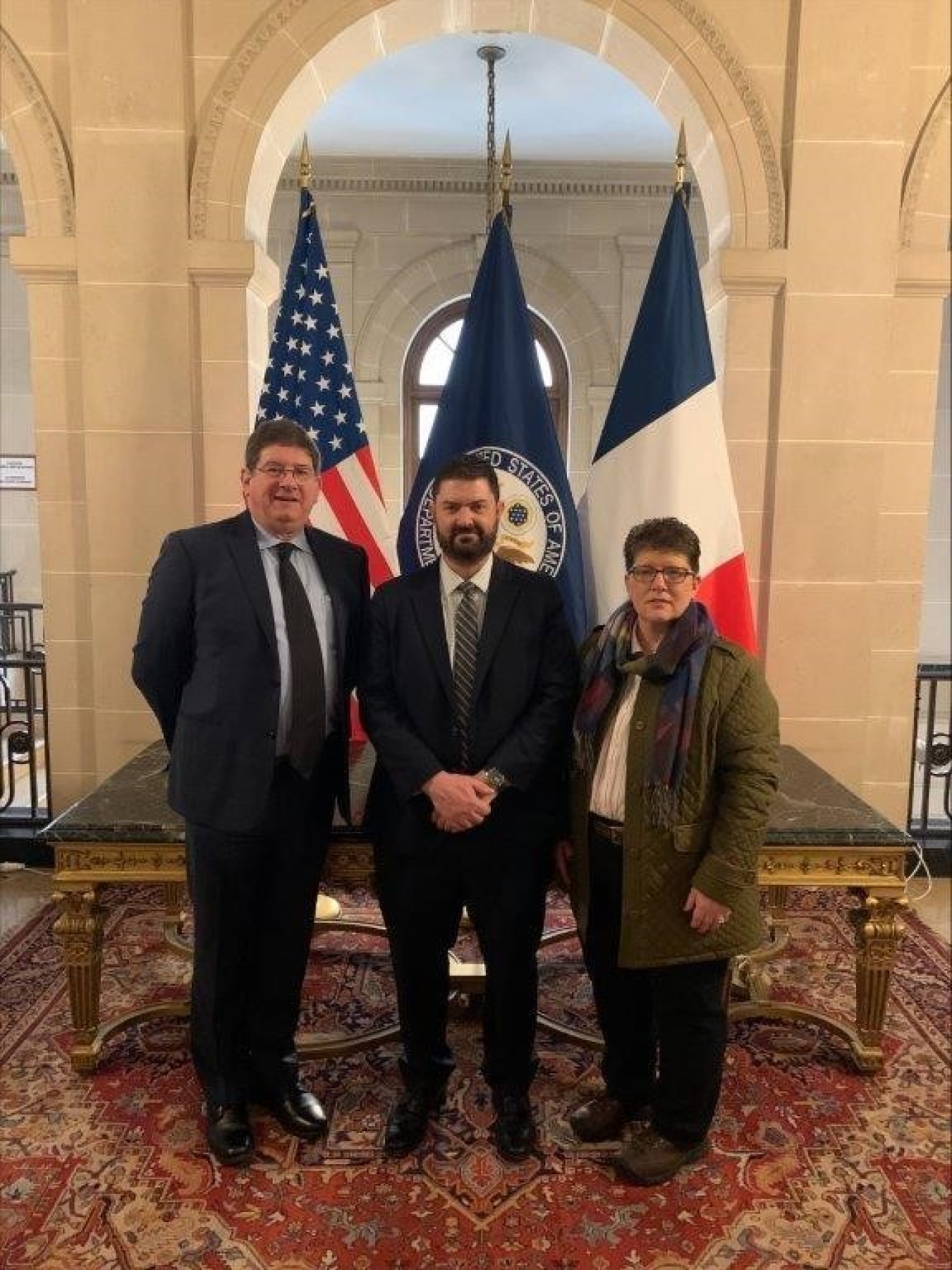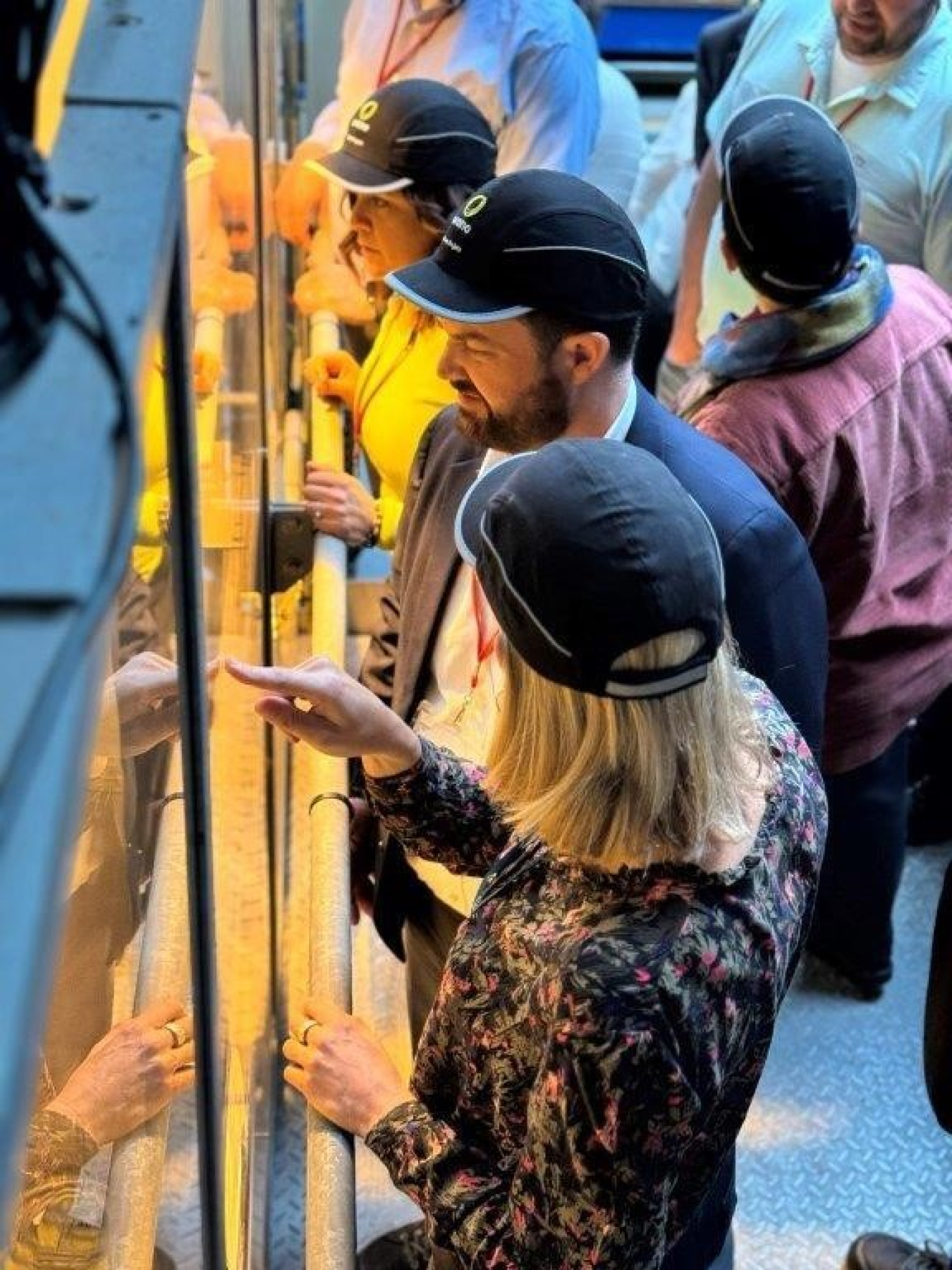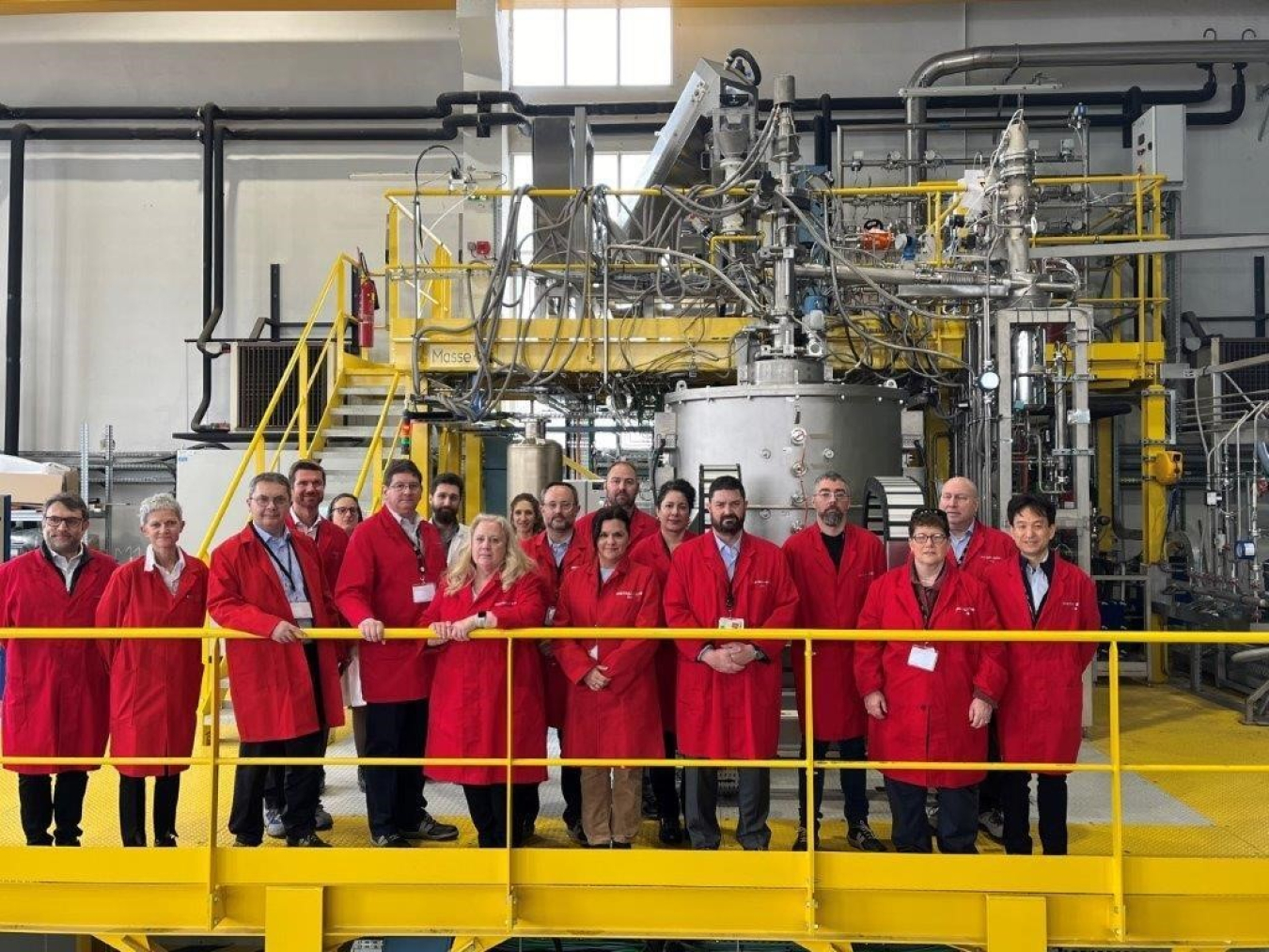EM Principal Deputy Assistant Secretary Jeff Avery and Idaho Cleanup Project team members traveled to France last week to visit Orano and Alternative Atomic Energies Commission(CEA) facilities and meet with the French National Radioactive Waste Management
Idaho Cleanup Project Citizens Advisory Board
June 4, 2024
EM leadership at the U.S. Embassy in Paris. Pictured, left to right, Greg Sosson, EM associate principal deputy assistant secretary for field operations; Jeff Avery, EM principal deputy assistant secretary; and Connie Flohr, manager, Idaho Cleanup Project.
EM Principal Deputy Assistant Secretary Jeff Avery and Idaho Cleanup Project team members traveled to France last week to visit Orano and Alternative Atomic Energies Commission(CEA) facilities and meet with the French National Radioactive Waste Management Agency (ANDRA).
Their trip follows a visit to France by EM team members last year, setting the stage for a greater opportunity for EM to learn about how France disposes of nuclear waste to assess how these lessons learned might be applied to EM’s mission, particularly at the Idaho National Laboratory (INL) Site.
“The U.S. and France have a long history of collaboration dating back to the origins of our country and I am excited about the potential of this visit to continue to solidify our collaborative activities,” Avery said.
The team also traveled to Normandy, where they visited Orano’s Research Hall of Beaumont-Hague, Temis and Orano’s large reprocessing plant in La Hague. La Hague treatment site is now the world leader in the field of reprocessing used fuel and serves as a technological model for many countries, as well as a source of continuous innovation.

EM Principal Deputy Assistant Secretary Jeff Avery is pictured at Orano’s Research Hall of Beaumont-Hague in Normandy, France.

The EM team visits the Dem&Melt In-Can vitrification system at the Alternative Atomic Energies Commission Marcoule site.
The EM team visited the Marcoule site in south France to view CEA’s vitrification pilot facility, and they met with Science & Technology Institute Director Christophe Joussot-Dubien. This visit was important to EM for evaluating vitrification capabilities to assess potential applicability for treatment of calcined high-level waste at EM sites, including the INL Site.
EM is also exploring vitrification technology across the U.S.
Avery recently visited Catholic University, one of the leading institutions with a cutting-edge laboratory focusing on safe waste immobilization.
In Texas, EM leaders and other subject matter experts recently visited Veolia’s GeoMelt Nuclear Waste Vitrification Facility to understand more about possibilities to vitrify legacy waste. That groundbreaking technology could help EM make low-level nuclear legacy waste safer, more cost effective and more efficient to treat and dispose.
France’s significant contributions to the radioactive waste management field are of particular interest to EM. They include the deactivation and decontamination of legacy nuclear sites; decommissioning and dismantling of facilities; remediation, including groundwater and soil; long-term waste management solutions; and workforce development and stakeholder engagement.
EM upholds a memorandum of understanding with ANDRA that provides a framework for cooperation between the U.S. and France in radioactive waste management, including issues relating to repository disposal technologies, geologic and engineering studies, decommissioning approaches, groundwater and soil remediation, and interim storage of spent fuel.
A joint statement by the United Kingdom, France, Canada and the U.S. declares their commitment to continue building their longstanding collaboration of cleanup of nuclear legacy sites. The statement was issued during the Waste Management Symposia in Phoenix, Arizona, last year. EM will meet with leaders from France and other countries at this year’s symposia from March 10-14.
“I believe that international partnerships help all of us solve our remaining challenges to environmental cleanup by enabling the sharing of best practices, allowing greater leverage of science resources and providing opportunities to accelerate innovation,” Avery said in closing during a meeting with Orano.
Reprinted from the EM Update Feb 20, 2024

